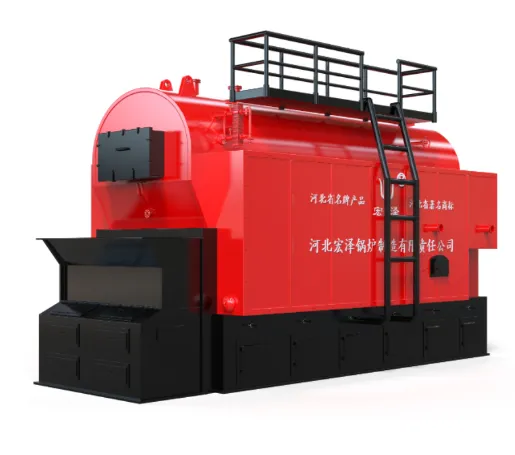
नोभ . 08, 2024 17:22 सूचीमा फर्कनुहोस्
Steam Boiler Working Principle
In various industrial processes, steam boilers play a crucial role, providing efficient heating solutions by converting water into steam. Understanding the steam boiler working principle is essential for engineers, maintenance personnel, and anyone involved in energy management. This blog post delves into the fundamentals of how steam boilers operate, the components involved, and their significance in industrial applications.
The Basics of Steam Boiler Working
The steam boiler working primarily revolves around the principles of thermodynamics. Essentially, this machine heats water to generate steam, which can then be used for various applications, such as power generation, heating, and sterilization. The process begins with water being fed into the boiler, where it is subjected to heat from fuels like natural gas, oil, or coal.
Key Components of a Steam Boiler
1. Burner: This component ignites the fuel to produce heat. The burner’s efficiency plays a significant role in the overall performance of the steam boiler working system.
2. Heat Exchanger: This vital element transfers heat from the combustion gases to the water in the boiler without allowing them to mix. The heat exchanger's design can significantly affect the efficiency of the steam generation process.
3. Water Supply System: For optimal operation, a steady water supply is crucial. Make-up water must be treated to prevent scale and corrosion, preserving the integrity of the steam boiler working system.
4. Steam Drum: This component serves as a reservoir for the steam and allows for the separation of steam from water. Proper functioning of the steam drum is essential for achieving the desired steam quality.
5. Safety Valves: These are critical for preventing excess pressure build-up within the boiler, ensuring safe operation. The steam boiler working principle relies on maintaining pressure within specified limits.
The Steam Generation Process
In general, the steam boiler working process includes the following stages:
1. Pre-heating: Before steam generation, water is initially heated to reach the desired temperature for efficient steam production.
2. Combustion: The burner ignites the fuel, releasing heat that is transferred to the water, causing it to boil.
3. Steam Production: As the water reaches its boiling point, it begins to convert into steam. The generated steam can then be collected and used according to the needs of the operation.
4. Condensation and Return: After fulfilling its purpose, the steam condenses back into water and is typically returned to the steam boiler for reuse, thus contributing to efficiency and sustainability.
Understanding the steam boiler working principle is not just technical knowledge; it's essential for optimizing performance and ensuring safety in industrial applications. By being aware of the components and processes involved, operators can troubleshoot issues, enhance efficiency, and contribute to effective energy management within their facilities.
In summary, recognizing the steam boiler working principle can significantly impact operational efficiency, cost savings, and safety. Whether you are an engineer, a technician, or a business owner, grasping how steam boilers function is vital for successful industrial operations.

-
Types of coal fired steam boiler: Efficient & Low Emissions
समाचारNov.17,2025
-
Types of Coal Fired Steam Boiler | Efficient & Reliable
समाचारNov.17,2025
-
Reliable Steam Boiler Supplier for Industrial Solutions
समाचारNov.17,2025
-
Coal Fired Hot Water Boiler | High Efficiency & Durable
समाचारNov.17,2025
-
Reliable Industrial Steam Boiler Manufacturers for Efficient Operations
समाचारNov.17,2025
-
Commercial Steam Boilers for Sale - Efficient, Gas & Oil
समाचारNov.17,2025
सम्बन्धित उत्पादनहरू






















